Seven Signs of Hazardous Trees
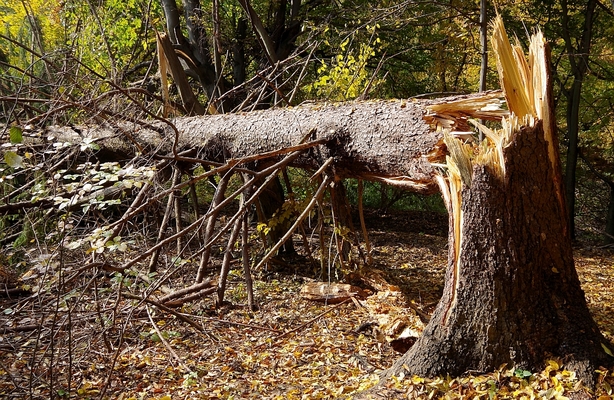
Introduction
Healthy trees are integral to our environment and landscapes, but when trees become hazardous, they pose significant risks to people and property. While it is impossible to determine exactly when or if a given tree will fail, several clues can indicate that a tree is at increased risk of dropping branches or falling over completely. Recognizing the signs of hazardous trees is crucial for maintaining safety. In this comprehensive guide, we expand on the seven signs of hazardous trees to help you identify potential issues early and take appropriate action.
Co-Dominant Leaders
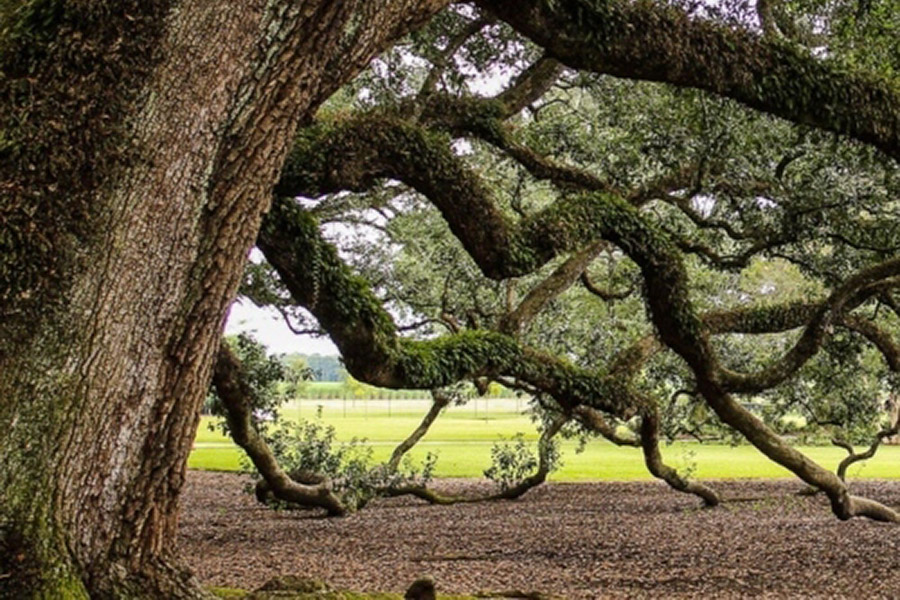
An Enormous Tree with Large, Heavy Branches
Understanding Codominant Leaders
Codominant leaders are branches that grow at a sharp V-angle, forming weak junctions prone to splitting. These V-shaped unions are structurally weaker compared to the U-shaped unions that healthy trees typically develop. When codominant leaders form, especially in the main trunk, they create a significant hazard. The tight angle does not allow for proper bark integration, leading to included bark, which weakens the union and makes it more susceptible to failure under stress from wind, snow, or the tree's own weight.
Mitigating Risks
To mitigate the risks associated with codominant leaders, regular pruning by a certified arborist is essential. Early intervention can help shape the tree and remove one of the competing leaders, allowing the remaining leader to grow stronger. In some cases, cabling and bracing may be necessary to provide additional support to the weak junctions, especially in older trees where pruning alone might not be sufficient. Proper tree care and maintenance are crucial in preventing the development of hazardous codominant leaders.
Significant Lean
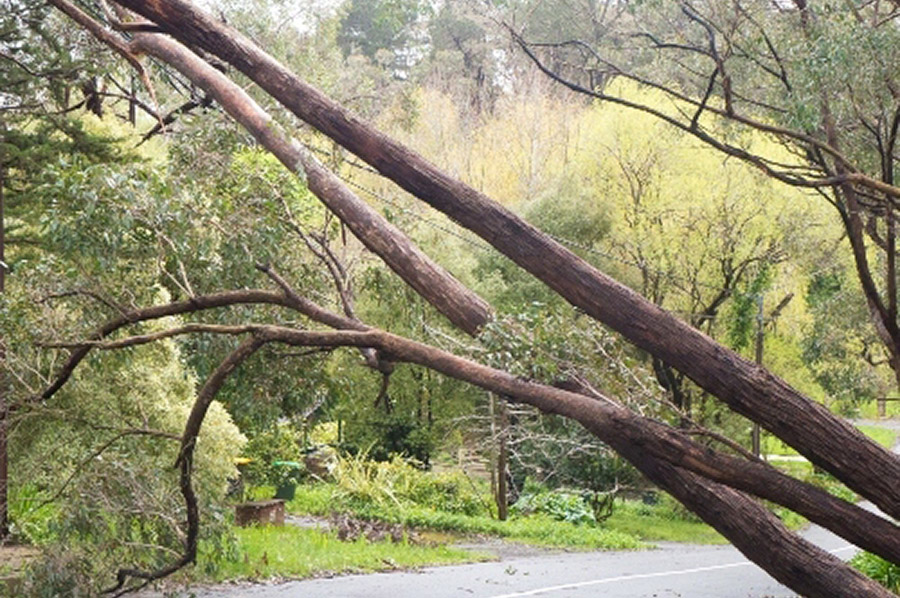
A Tree Leans Precariously Over a Roadway
Causes and Risks of Tree Leaning
A leaning tree can be a sign of a serious problem, especially if the lean is recent or if the tree is leaning significantly. Trees naturally develop reaction wood to counteract the effects of leaning, but sudden shifts in lean indicate instability. Factors such as root damage, soil erosion, or extreme weather events can cause a tree to lean dangerously. Soil mounding at the base of a leaning tree is a clear indicator of potential root plate failure, which can lead to the tree falling unexpectedly.
Assessing and Addressing Leaning Trees
If you notice a tree with a significant lean, it is important to have it assessed by a professional arborist immediately. The arborist will evaluate the extent of the lean, the condition of the roots, and the overall health of the tree. Depending on the findings, options may include soil stabilization, root treatment, or, in severe cases, tree removal to eliminate the hazard. Regular monitoring and maintenance can help detect leaning issues early and prevent accidents.
Large Dead Branches
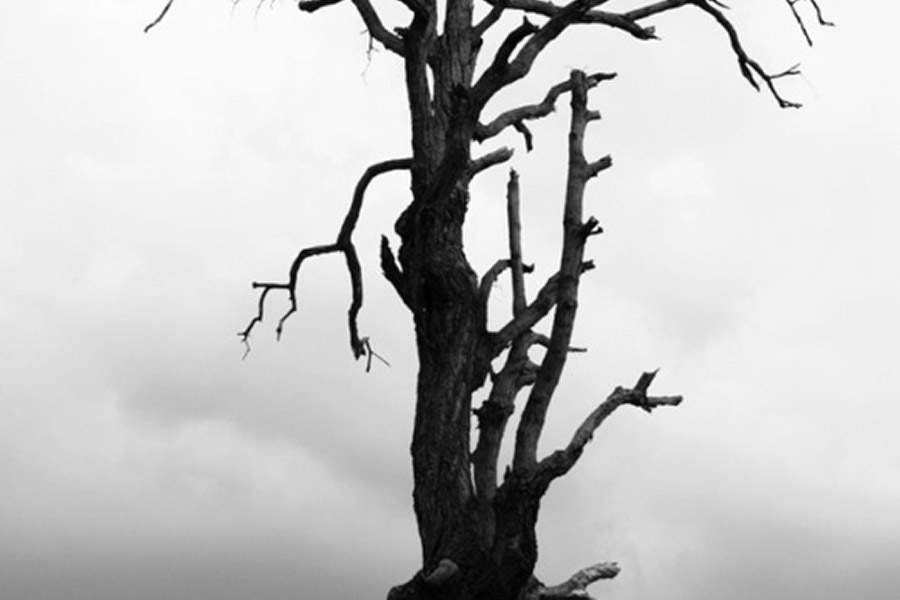
A Tree with Many Dead Branches
Identifying and Understanding Dead Branches
Dead branches, also known as widow-makers, are a common hazard in trees. These branches have lost their vitality and are no longer able to support themselves. As part of a tree's natural compartmentalization process, it sheds these branches to protect the rest of the tree from decay. However, dead branches pose a significant risk to people and property below, as they can fall unexpectedly, especially during storms or high winds.
Proper Management of Dead Branches
To manage dead branches effectively, regular tree inspections and pruning are necessary. An arborist can safely remove dead branches, reducing the risk of them falling and causing damage. In addition to pruning, ensuring the overall health of the tree through proper watering, fertilization, and pest management can prevent the occurrence of dead branches. Proactive tree care is essential in maintaining a safe and healthy landscape.
Mushrooms on the Trunk or Roots

Small Mushrooms Line the Trunk of a Tree
Significance of Fungal Growth
Mushrooms growing on a tree's trunk or roots are a clear indication of internal decay caused by fungal infection. While some fungi are harmless, many are pathogenic and can rapidly degrade the structural integrity of the tree. The presence of mushrooms suggests that the fungus has already colonized the wood and that the tree is compromised. This can lead to weakened roots or trunk, making the tree more susceptible to failure.
Addressing Fungal Infections
When mushrooms are observed, it is crucial to have the tree inspected by an arborist. The arborist will identify the type of fungus and assess the extent of the decay. Depending on the severity, treatment options may include fungicide applications, soil amendments, or, if the tree is severely compromised, removal. Regular monitoring and prompt action are key to managing fungal infections and preserving tree health.
Horizontal or Vertical Cracks
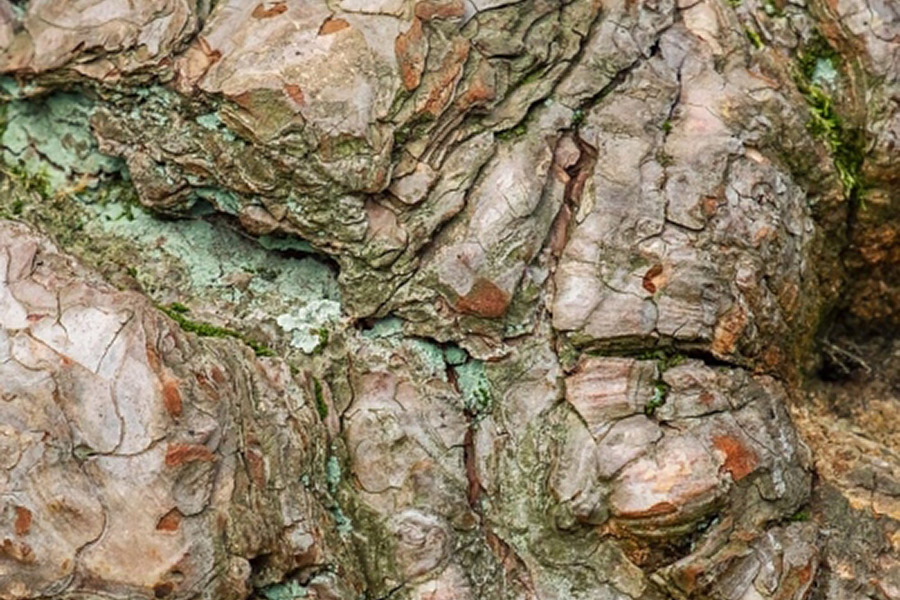
Tree Bark Exhibiting Large Cracks
Dangers of Tree Cracks
Cracks in the trunk or major branches of a tree are serious indicators of structural failure. Horizontal cracks are particularly concerning as they suggest that the wood fibers are under stress and may fail soon. Vertical cracks, while sometimes less immediately dangerous, can also indicate significant internal problems. Both types of cracks weaken the tree and increase the likelihood of branches or the trunk splitting apart.
Inspection and Intervention
Trees with visible cracks should be inspected by a professional arborist without delay. The arborist will evaluate the crack's depth, length, and location to determine the best course of action. In some cases, cabling and bracing can provide additional support to prevent further splitting. However, if the cracks are extensive, tree removal may be the safest option. Regular inspections and early intervention are essential in managing tree cracks effectively.
Cavities in the Trunk
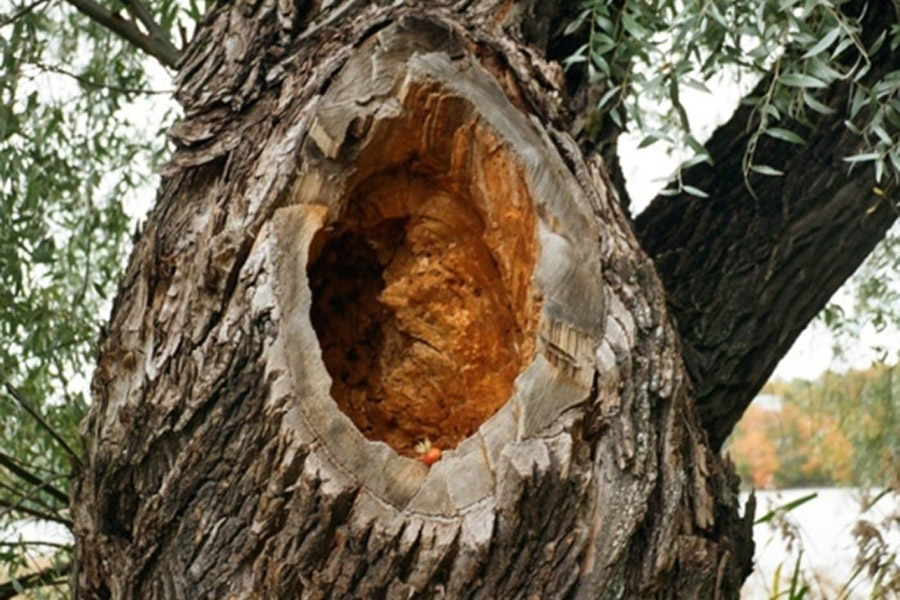
A Tree Trunk Containing a Sizeable Cavity
Implications of Tree Cavities
Cavities in a tree's trunk can indicate significant internal decay, but not all cavities are harmful. Some cavities result from past injuries that the tree has successfully compartmentalized. Conversely, some voids may be caused by very aggressive and destructive fungi, thereby representing an immediate hazard. Cavities with rolled edges often suggest ongoing decay and pose a structural risk. The size and location of the cavity as well as the overall health of the tree determine the level of hazard.
Evaluating and Managing Cavities
An arborist can assess tree cavities to determine their impact on the tree's stability. Small, well-compartmentalized cavities may not require immediate action, but larger cavities or those indicating active decay might necessitate intervention. Treatments can range from monitoring and maintenance to tree removal if the cavity compromises the tree's structural integrity. Understanding and managing tree cavities is crucial for maintaining tree safety and health.
Cavity-Nesting Wildlife
Signs of Internal Voids
Wildlife such as birds, bees, and squirrels nesting in a tree can indicate the presence of internal cavities. These cavities might not be visible from the ground, but the presence of animals suggests that voids exist within the tree. While some wildlife use cavities without harming the tree, others can exacerbate decay or weaken the tree's structure.
Addressing Wildlife-Induced Hazards
If you notice bees, ants, birds, raccoons, or squirrels spending time on trees that do not produce food, contact an arborist. The arborist will determine the extent of the internal voids and their impact on the tree's health. In some cases, wildlife may need to be safely relocated to prevent further damage. Managing these hazards ensures that the tree remains safe and stable while preserving the local ecosystem.
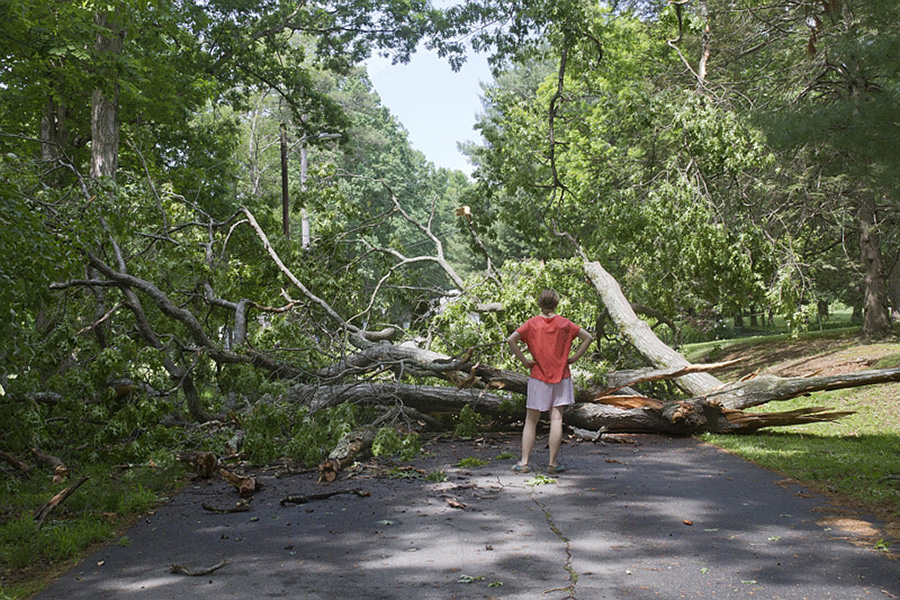
A Roadway is Blocked Due to a Fallen Tree
Conclusion
Identifying and addressing hazardous trees is crucial for maintaining safety and preserving the health of your landscape. By recognizing the signs of hazardous trees and taking appropriate action, you can prevent accidents and ensure the longevity of your trees.
While it is important to keep an eye out for these seven signs, it is important to understand that these signs do not always necessitate removal of the tree. Some trees may be stable enough as is, while others may be saved with the help of corrective measures such as corrective pruning or attaching supportive cables to weak branch junctions.
For professional tree care and hazard assessment in the San Francisco Bay Area, trust Arborist Now. Our certified arborists are equipped to handle all your tree care needs, ensuring a safe and beautiful environment.
Originally published on May 16, 2016.





